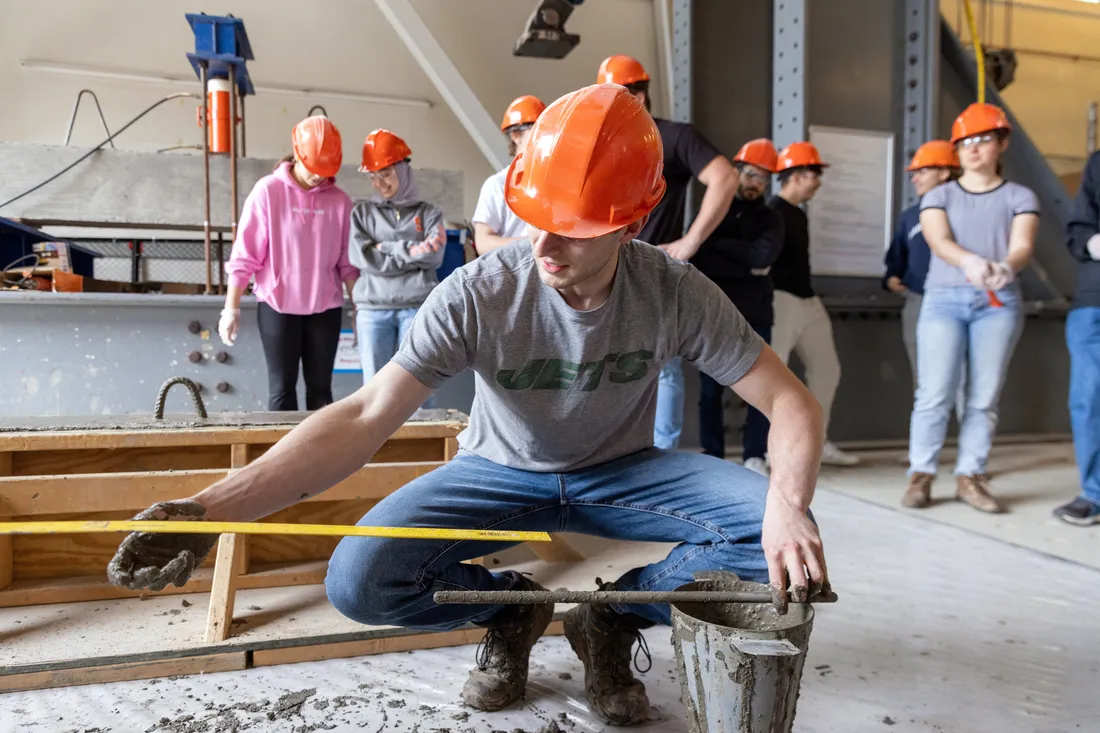
As artificial intelligence (AI) takes center stage in a global debate over its merits and dangers, a new Syracuse University STEM education program led a group of talented local high school students this summer to the starting line of working with autonomous systems. The students came together to build scale-model autonomous race cars programmed to navigate around obstacles and respond to changing environments. Known as Orange Works, the program was hosted by the University’s Autonomous Systems Policy Institute (ASPI) with the goal of introducing the students to the advanced technology.
“These students will live in a world full of autonomous systems where, starting today, they will have the tools to help shape the future. We want this program to educate and inspire students, whether they become engineers or select other career paths,” says Anthony Terrinoni, managing director of ASPI, who directs Orange Works. “Orange Works is a powerful vehicle by which we plan to transform the local educational landscape, providing opportunities previously unavailable to local high school students. They will learn not only how to build complex autonomous systems, but also the social, economic and environmental impacts of the technology they develop.”
These students will live in a world full of autonomous systems where, starting today, they will have the tools to help shape the future.
Anthony Terrinoni
College of Engineering and Computer Science faculty and doctoral students (who served as teaching assistants) worked with the students throughout the four-week initiative. Mechanical engineering professor Zhenyu Gan, electrical engineering and computer science professors Senem Velipasalar and Duane Marcy, and doctoral students Mengyu Liu G’20, Huantao Ren G’21 and Jiyang Wang G’19 helped guide the students through a series of autonomous car workshop modules provided by MIT’s Beaver Works Summer Institute/Lincoln Laboratory. The advanced technology lab is known as a hub for autonomous systems innovation and for promoting STEM education through a variety of programs. To cap off the program, the Orange Works participants journeyed to the MIT campus in early August where they tested their cars in the Beaver Works challenge competition against 10 other teams, including international ones from Greece and Japan.
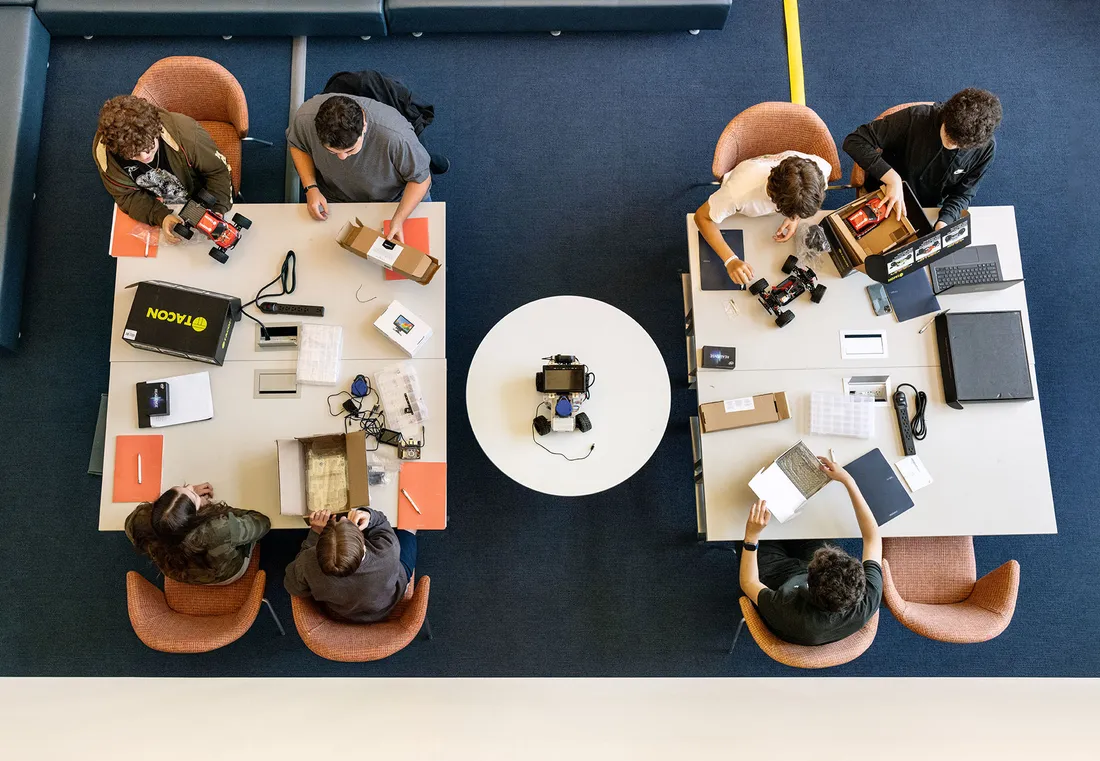
Orange Works Students Begin Building With Look to the Future
The Orange Works participants split into two teams: The orange team (left) featured students and recent graduates of Christian Brothers Academy (CBA), and the blue team (right) included students from CBA, Fayetteville-Manlius and Nottingham high schools. They gathered weekdays on the third floor of the Center for Science and Technology, where they developed their cars for the Beaver Works competition, officially called the Autonomous RACECAR (Rapid Autonomous Complex Environment Competing Ackermann steeRing) Grand Prix. “There are lots of interesting applications of machine learning,” Professor Senem Velipasalar told the students in their introductory session. “You use the basics of that during this program, and I think it will open a path of exciting research for you in the future.”
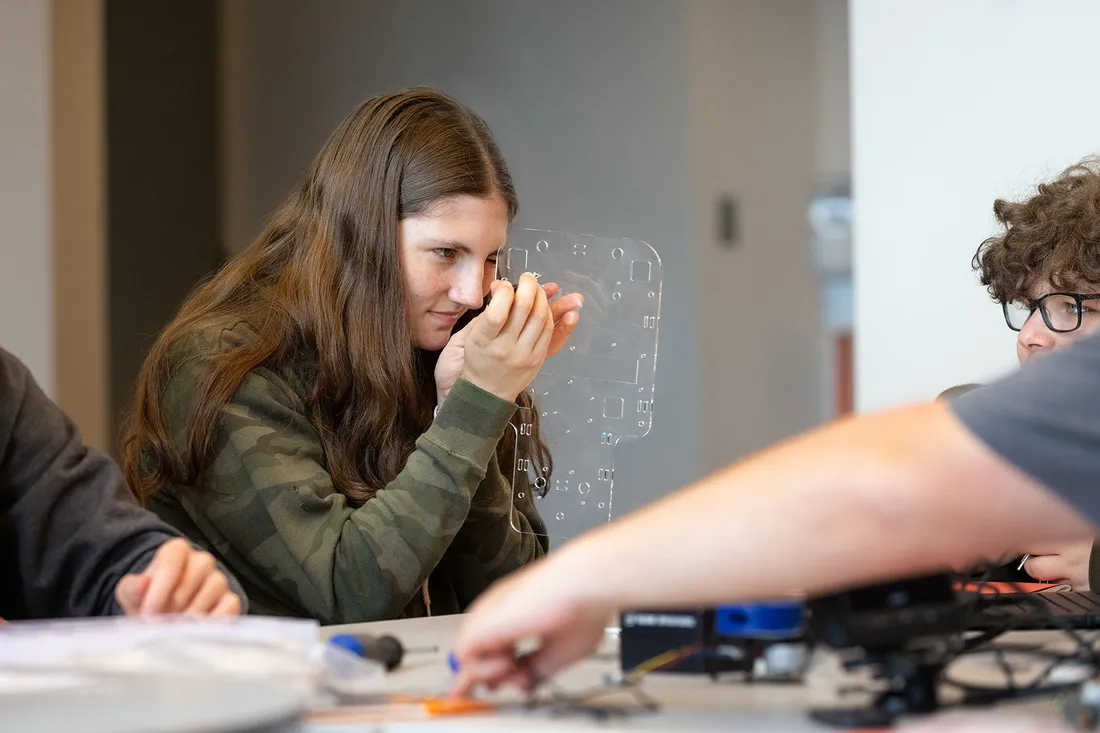
Assembling Autonomous Model Race Car Requires Hands-On Work
CBA student Emily Tymkiw checks the size of a screw to add to the car’s chassis where various components would be placed. Tymkiw has competed in Science Olympiad and is interested in engineering. As for learning about autonomous systems, she says, “It’s something new and fun that I will probably use in my future.”
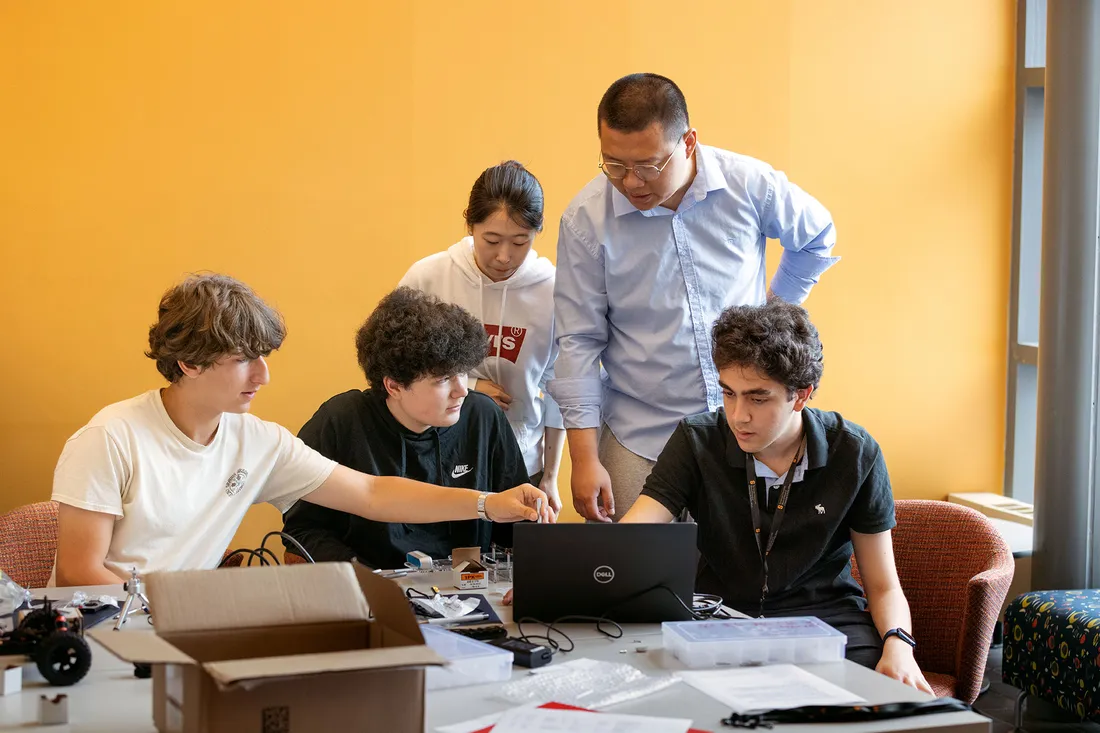
Faculty and TAs Introduce Students to AI Technology
Teaching assistants Mengyu Liu (standing right) and Huantao Ren work with blue team members (from left, seated) Alessandro Terrinoni (Nottingham), Alex Ross (CBA) and Deniz Gursoy (Fayetteville-Manlius) as they assemble their autonomous race car (the team also included Coen Fierke of Nottingham and Jacob Chen of Fayetteville-Manlius). “When you have questions, just ask. We are happy to help,” Liu, the lead TA, tells the students. “It’s very challenging and you’ll find problems, so don’t worry.” Liu also emphasizes the value of the students learning about autonomous systems and building their self-confidence. “This program gives them the sense that these topics are not far from our daily lives, and it’s not some secret that normal people can’t learn,” he says. “It’s also really important for them to have a basic understanding of the technology—and we want them to know more than technology, we want them to know about the policies and ethics of artificial intelligence.”
AI Expert Shares Insights and Expertise
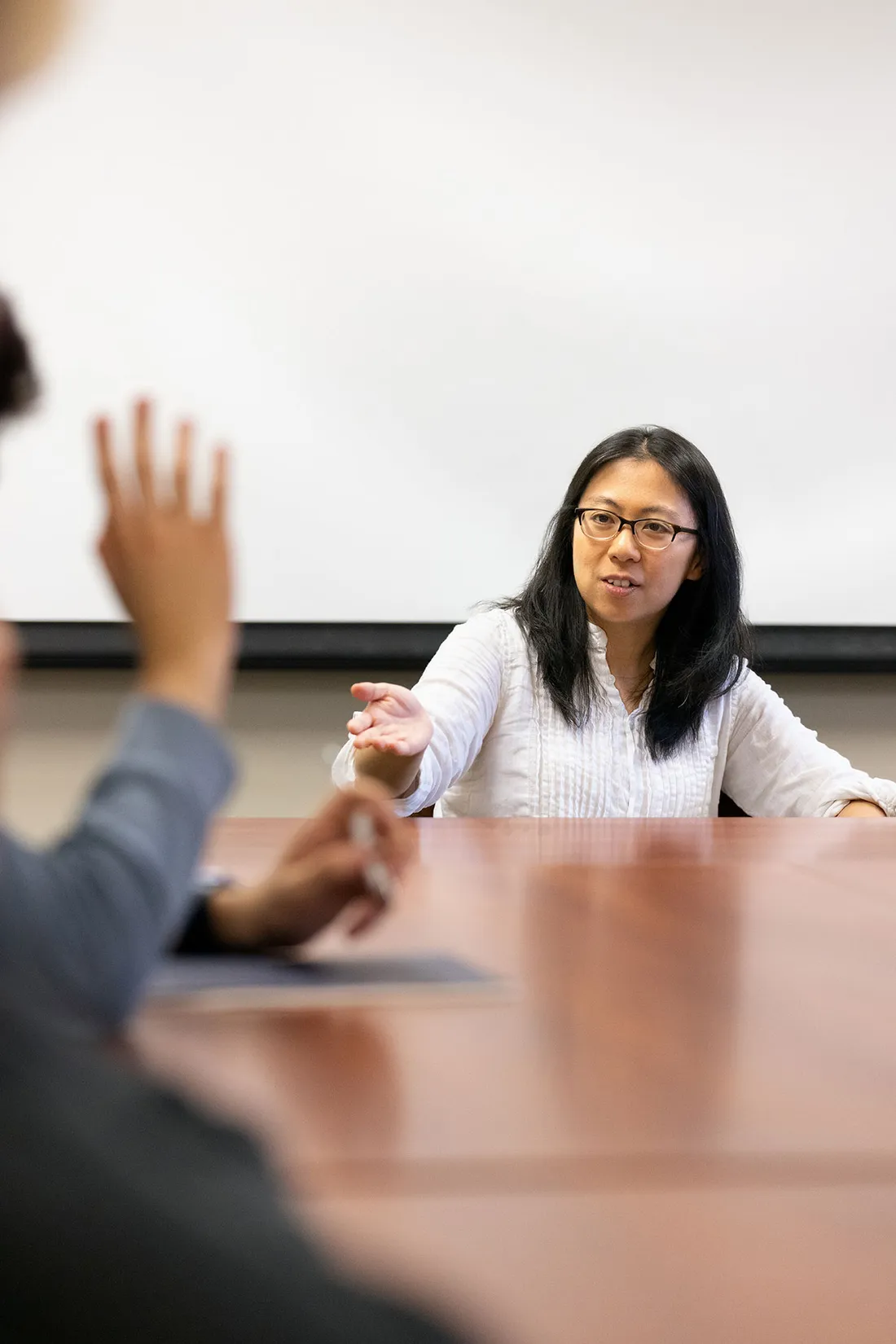
Baobao Zhang, a political science professor in the Maxwell School of Citizenship and Public Affairs and senior research associate at ASPI, fields a question from an Orange Works student during a meeting with the group in Maxwell Hall. Zhang, an expert on AI ethics and policy, discusses AI-related topics with the students, including ChatGPT, her work as a consultant on the European Union AI Act and her current research gathering public opinion about the risks of AI to generate policy recommendations. She also talks about the need for a future labor force of AI auditors who can check systems for safety, accuracy and transparency. Zhang cites ASPI for its unique interdisciplinary approach that draws on the knowledge of computer scientists, engineers, legal scholars, policymakers and other experts. “My favorite part of what I do is working in teams where people bring in different expertise,” she says. “It’s really cool to work at a job where I’m learning from other people.”
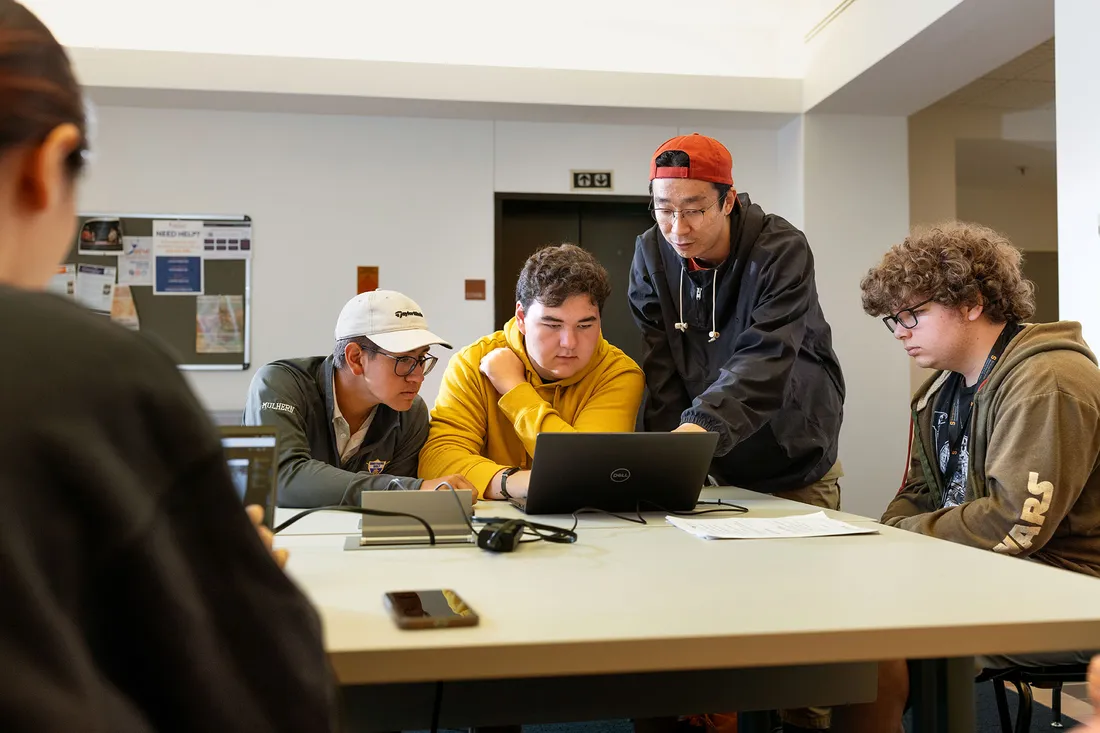
Students Tackle Coding in Python Programming Language
Teaching assistant Jiyang Wang (standing) checks the coding work of orange team members Ryan Mulhern (left), Kaidan Willey and Bryan Garlow (the team also included Emily Tymkiw and Luke DeLorenzo). As a prerequisite for Orange Works, the students took an introductory course on the Python programming language taught by electrical engineering and computer science professor Nadeem Ghani and TA Gowtham Behara. Since the course, offered online by Harvard, is available to a wide range of students and covers a lot of ground, Ghani says it helped him gain insights on teaching Principles and Practice of Programming (CIS 151), an introductory course for first-year computer science students, many of whom have little or no experience with coding. The experience led him to believe he can add more complexity to CIS 151, and he plans to introduce some robotics programming as part of the class in the future. “Before starting Orange Works, we weren’t sure how prepared our high school students would be, and whether this class would turn out to be the right preparation,” he says. “However, the students did extremely well with this class.”

Programmed to Perform
Each team developed a battery-powered autonomous race car featuring a commercial frame decked out with a circuit board, motor drive, Jetson Nano computer, camera and a LIDAR (Light Detection and Ranging) system. All the car’s decision-making was programmed, allowing the car to perform such tasks as identify colors, detect distances, structures and movement, and respond to changing environments—all preparation for taking on the challenge course at MIT. The work required a lot of trial and error, and the students tested their cars in a simulated environment as part of the process. The biggest challenge was integrating the individual components into a system that works smoothly, Professor Duane Marcy says. “It’s a systems project, so putting the whole thing together can be difficult.”
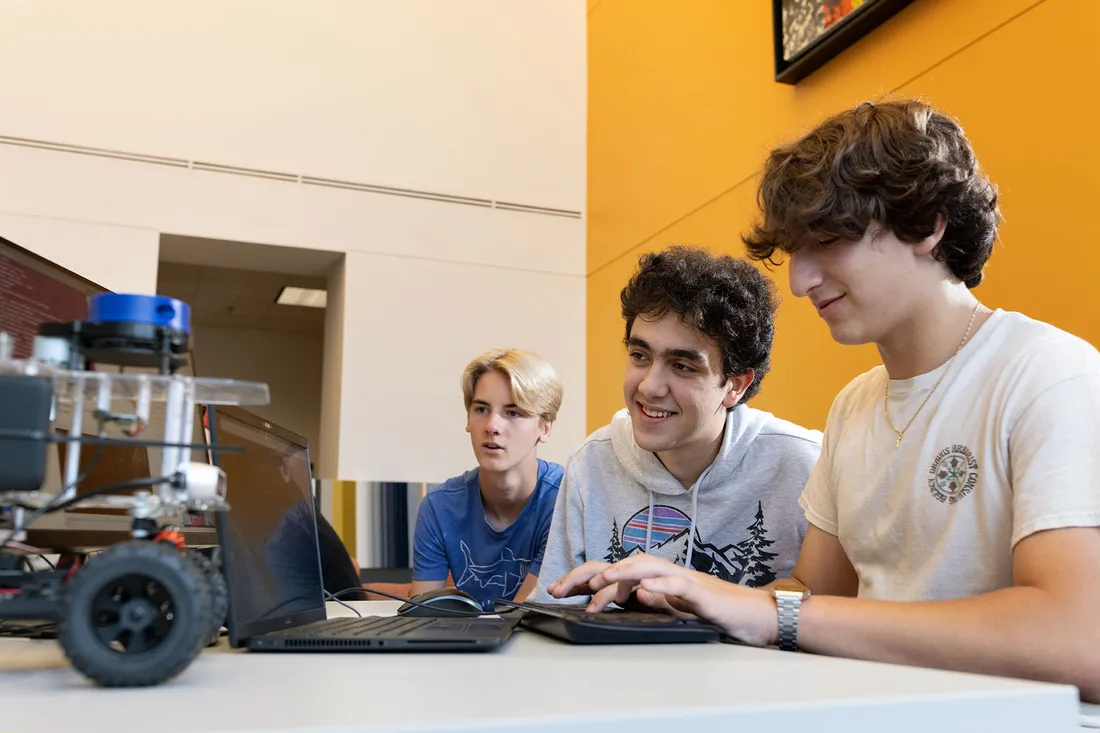
Students Embrace Teamwork and Troubleshooting
Blue team members Coen Fierke (left), Deniz Gursoy and Alessandro Terrinoni tweak the coding for their car. Throughout the Orange Works program, the students supported each other and learned the value of teamwork as they tackled an array of variables building and programming their cars and troubleshooting. “The challenges have been fun,” Terrinoni says. “I’ve learned more coding and engineering skills along the way.”
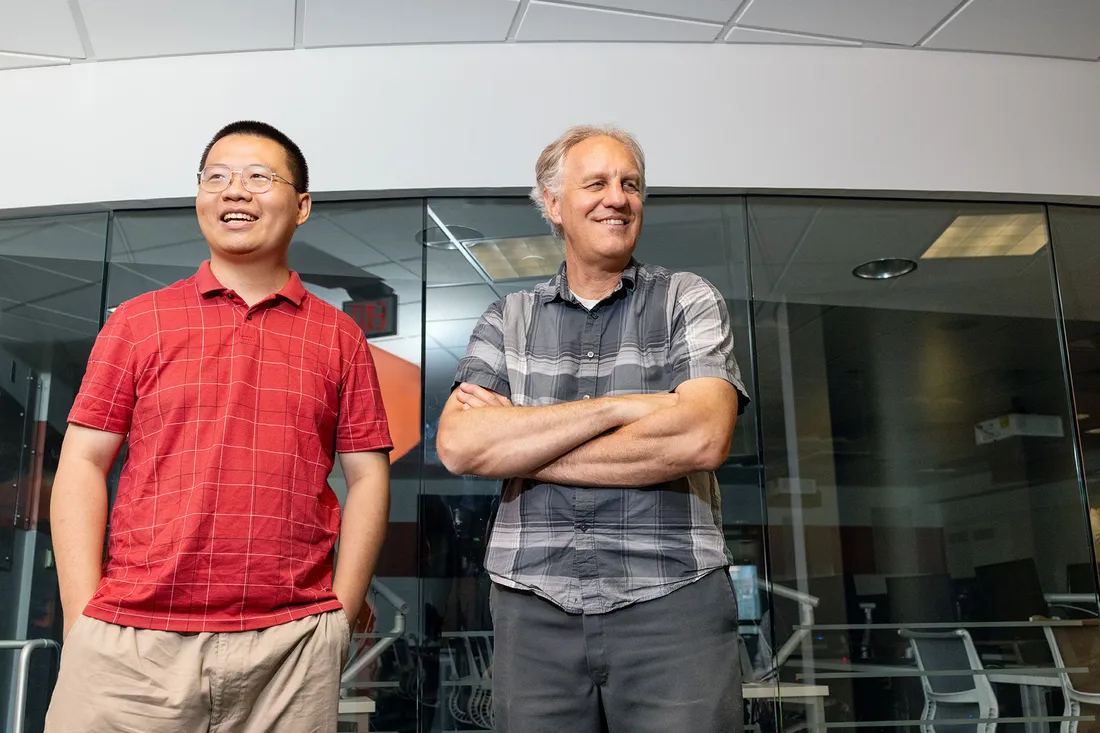
Orange Works Students Go Beyond Expectations
Mengyu Liu (left) and Duane Marcy watch the students test the car cameras, which have sensors that detect depth and color. Marcy likens Orange Works to design projects that Syracuse electrical engineering and computer science majors work on in their junior and senior years, in which he introduces them to programming that uses a robot operating system to build robotic arms and cars and biped robots. “The program from MIT is pretty well prepared and we followed along the labs they created that will bring us to the competition,” he says. Liu believes it’s a good experience to communicate and work with the next generation of students and considers it community service. “These young students are really talented,” he says. “We should not limit our expectations of them.”
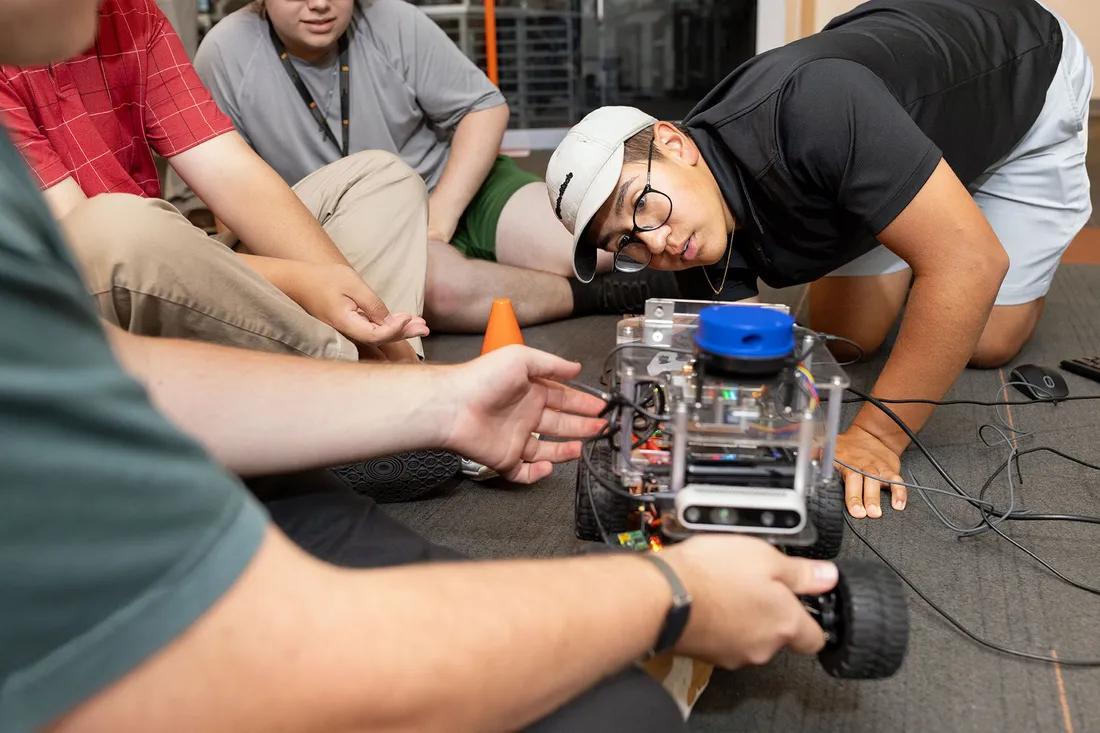
Time to Test the Camera
Ryan Mulhern takes a close look at the orange team’s car during a test session of its camera. Since the camera is light sensitive, the environment can affect how it interprets different colors. Programmed to distinguish orange images, it was reading more red because of the effect of the lighting where they were testing it. The team adjusted the coding and the car eventually homed in on orange. “It’s a delicate process—always is with machines,” teammate Bryan Garlow says. Mulhern enjoyed the coding process of trial and error and then “having it all come together,” he says. “It’s been a great learning experience and fun learning the different aspects of coding, having the lectures with our TAs and the professors. I’ve liked it all a lot.”
Closing in on the Orange Cone
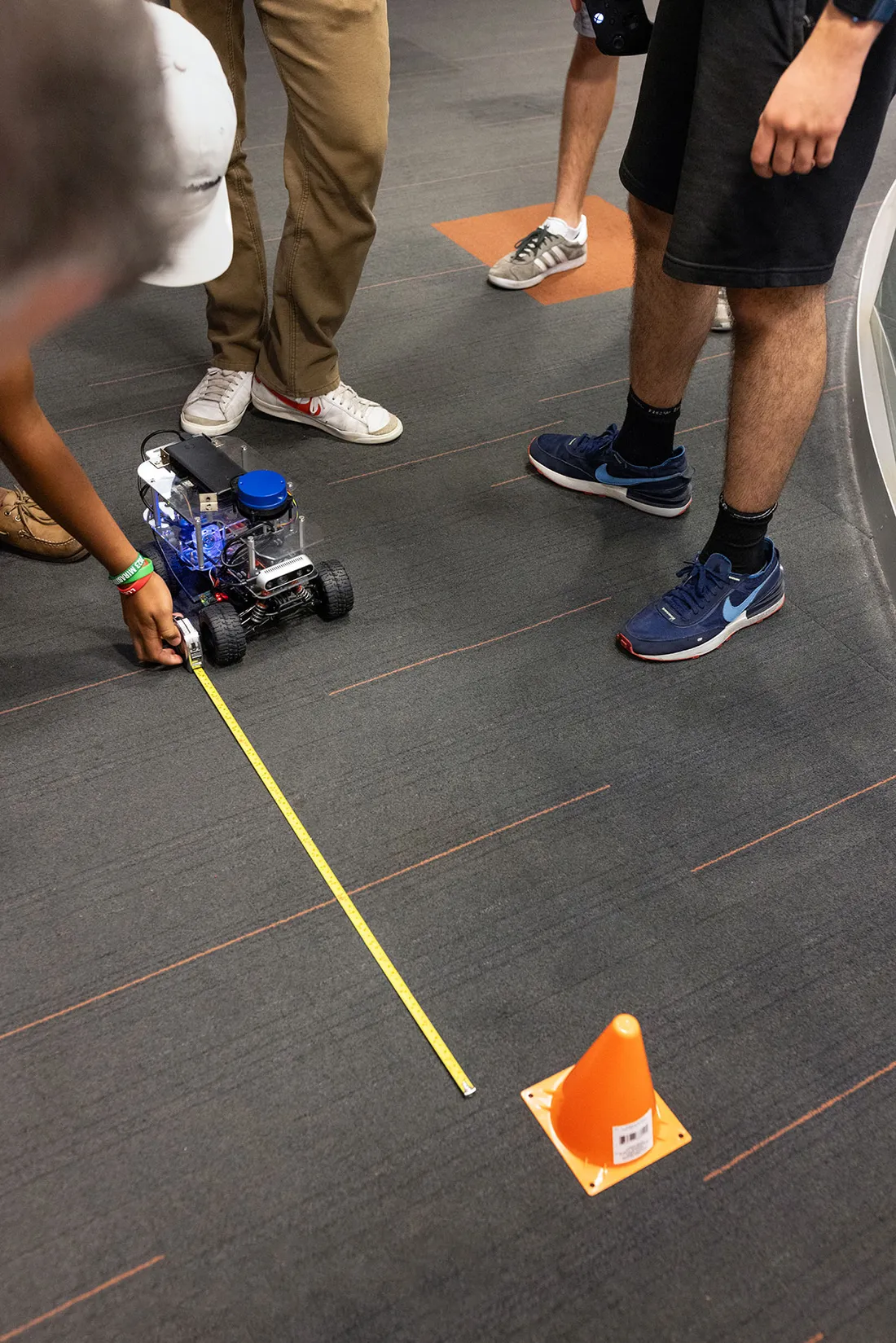
Once their camera begins correctly identifying orange, the orange team succeeds in getting their car to stop exactly 40 centimeters before an orange cone—as it was programmed to do. After the distance is checked with a tape measure, applause erupts. “I say that’s a win,” says Bryan Garlow, who entered the program hoping to understand more about computers and “how each and every single part works.”

